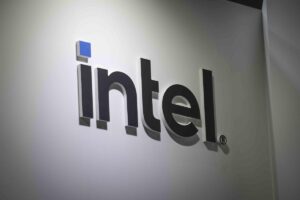Intel’s Potential Acquisition Talks: A Review and What It Means for Investors
Recent news has sparked fresh interest in Intel Corporation (INTC), with shares experiencing a morning surge following reports indicating that Broadcom (AVGO) and Taiwan Semiconductor Manufacturing Company (TSMC) are weighing acquisition bids for the beleaguered chipmaker. This development comes after a tumultuous period for Intel, where shares fell by approximately 60% in 2024, largely linked to challenges related to its turnaround strategy.
What’s Happening?
According to reports from the Wall Street Journal, both Broadcom and TSMC are exploring proposals that would target different facets of Intel’s business. Broadcom seems focused on Intel’s chip design operations, whereas TSMC is contemplating a takeover of its manufacturing capabilities. Each potential bid poses its own set of complexities, particularly for TSMC, which may face significant costs to modify Intel’s existing factories to align with its own manufacturing techniques.
These are not isolated incidents; the conversations around Intel’s viability and potential breakup have been swirling for months, particularly as the company’s stock has struggled to maintain its value amidst leadership changes and disappointing financial reports.
A Broader Market Perspective
It’s essential for investors to analyze the implications of these acquisition talks beyond just Intel’s stock movements. The semiconductor industry is undergoing significant consolidation, and mergers could redefine market dynamics. Consolidation often leads to better resource allocation and innovations but also raises concerns over market monopolies and regulatory scrutiny.
Intel’s struggles have given rise to opportunities in competitors like AMD and NVIDIA, which have capitalized on Intel’s missteps by capturing market share. Such shifts highlight the directions investors might consider, especially in an evolving tech landscape.
Why Now?
Intel’s stock gained traction just as trading resumed after a three-day weekend, a welcome relief for investors who witnessed a sharp downturn last year and the recent departure of CEO Pat Gelsinger. To many, this uptick linked with acquisition speculations signifies a potential floor in Intel’s long decline — albeit a cautious one.
While there’s no confirmation of any deals just yet, the buzz itself has become a beacon for traders. In pre-market trading on Tuesday, Intel’s shares rose more than 5%, reflecting optimism that these discussions could lead to a favorable outcome for the company and its stakeholders.
What Should Investors Do?
For savvy investors, this presents a critical juncture. Here are some considerations:
-
Monitor Developments: Stay abreast of news surrounding the acquisition talks. Any credible confirmation or rejection of bids will impact stock performance dramatically.
-
Assess Risks: The semiconductor arena is highly volatile, and Intel’s past performance should prompt caution. Understanding the ramifications of a potential breakup is vital.
-
Diversify Holdings: Given the uncertain outlook for Intel, consider spreading investments across various semiconductor stocks and tech companies to mitigate risk.
-
Long-Term View: Acquisition talks can take time to evolve. It’s crucial to evaluate whether you’re ready to hold onto Intel shares for the long haul, especially considering its recent performance and market position.
- Engage with Market Analysts: The experts at Extreme Investor Network offer tailored insights that can help navigate your investment decisions strategically. Leverage their expertise to make informed choices.
While the chatter around Intel’s potential acquisition is noteworthy, the long-term implications are even more significant. By taking a strategic approach, investors can position themselves to capitalize on shifts in the semiconductor landscape while mitigating risk in their portfolios. Keep an eye on Intel; this may just be the beginning of a very different chapter for the tech giant.

